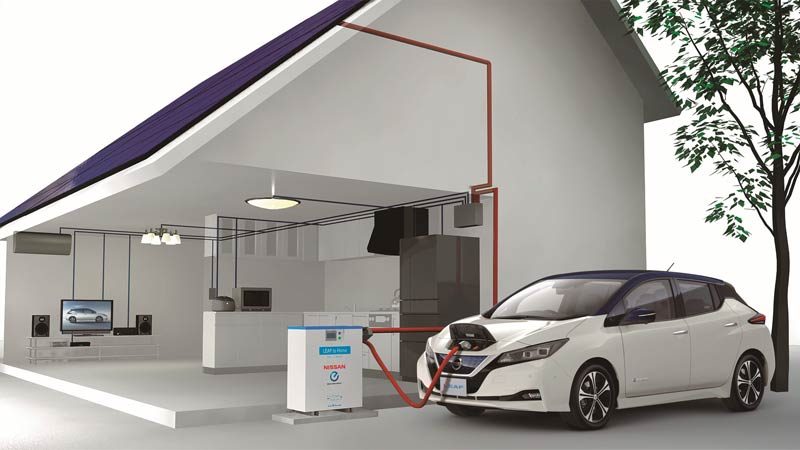We are encouraging questions from readers about electric vehicles, and charging, and whatever else you want to learn. So please send them through and we will get our experts to respond, and invite other people to contribute through the comments section.
Hi Bryce,
We are currently in the process of building a new house.
Given that we will inevitably have a full electric car in the next few years and given the possible development of V2G/V2H what should we have the electricians install in the garage.
It will obviously be cheaper to install or at least make provision for an installation at this stage rather than having to open up walls for rewiring down the track.
The house has 3 phase power to the switchboard and will have an 8.6kw PV system on the roof with a Fronius 3 phase inverter in the garage.
As we live in a country town the options for fast charging nearby will probably be limited for a considerable time.
Regards
Jim Norris
Hi Jim – you ask a good question – my answer to which is probably going to be somewhat unsatisfactory.
For the readers: V2G stands for ‘Vehicle to Grid’, meaning the car battery can supply power to the grid via a DC to AC converter system.
Such systems can be financially beneficial through tariff offerings by the power companies. (V2G then being used by power companies to ‘smooth’ peak demand by pulling power from vehicles by ‘talking’ to the V2G system to ask for a certain amount of power: thus avoiding installing bigger transformers and street cables merely to meet occasional times of very high electricity demand).
V2H is ‘Vehicle to House’ – meaning the vehicle supplies power (also via a DC to AC converter) to the house ONLY.
These systems are generally marketed as an emergency measure in the event of a power failure – although they can be used to ‘bank’ daytime solar production for overnight use. It is also possible to have a combined V2G/V2H system where you can control the amount of power to each you provide.
The difficulty in suggesting preparatory work for later installation of such systems is that V2G/V2H technology is still in its infancy, so exactly what sort of preparatory activities could be done now are not (yet) definable.
Worse still, the few vehicles with prototype V2G or V2H systems use different systems for supplying power to the home and/or grid.
As there is no common system or standard, any V2G/V2H system you prepare for at the moment would also need to be car specific. Developments are taking place to streamline such systems – but it is likely a little way off before we see the outcomes.
Altogether: as I started off by saying, a not very satisfactory answer – although not unexpected given where such systems are in their product development cycle.
By the way: home battery systems are a far more mature technology – and may ultimately remove the need for V2G/V2H systems at all.
This is because old EV batteries are not ‘dead’ when in 8 – 10 years they may need to be replaced in an EV: they can be repackaged to make excellent storage battery systems. (Particularly useful for home back-up systems on the day there is a power failure when the V2H capable EV is away somewhere …)
As a result, I can only give some general guidelines to make it easier to retrofit a V2G/V2H system when you get that far into your EV journey. (And hopefully by that time the systems will be more mature in terms of vehicle cross-compatibility and regulatory requirements regarding how they connect to the grid).
I would therefore recommend you ensure the PV inverter, EVSE and switchboard are all near each other, or at least easily accessible to each other through placing behind the switchboard with an intervening stud wall rather than a brick one for instance.
Also, you’ll need to allow room for a potential second switchboard or other control box associated with, or replacing, the EVSE and/or solar inverter. (For example: some systems use a totally separate switchboard to the ‘normal’ household switchboard – that may end up becoming the norm, or it may not. As I said: early days).
Given you are three phase connected and are likely to not have DC fast-charge facilities nearby for some time, I would also allow cabling for a three phase EVSE capable of delivering up to 22kW charging for the rare occasion that you might need a full recharge quicker than at a 7kW overnight rate.
The cable for three phase is only slightly more expensive that a single phase one – and definitely cheaper compared to the labour to install it later.
(By the way: 22kW is really only needed if you want to fully charge an EV with a larger battery in a few hours – and even then, only a few of the EVs available use three phase 11, 16 or 22kW charging. It’s only because you note that you are in a country town and unlikely to have access to DC fast chargers in the near term that I would suggest preparing for a three phase EVSE. For most people, it would be overkill).
Alternatively – you could just avoid these V2G issues and install a home battery system now …. but these are not (yet) cost-effective unless you have a particularly flaky grid supply.
(They may however become far more cost-effective as old EV cells start to be used in them: in which case let me know and I’ll write a second article on preparing for a later installation of a home battery system J ).
I hope that helps to at least broaden your knowledge of the issues … even if I have actually failed to answer your question.
Cheers
Bryce

Bryce Gaton is an expert on electric vehicles and contributor for The Driven and Renew Economy. He has been working in the EV sector since 2008 and is currently working as EV electrical safety trainer/supervisor for the University of Melbourne. He also provides support for the EV Transition to business, government and the public through his EV Transition consultancy EVchoice.

